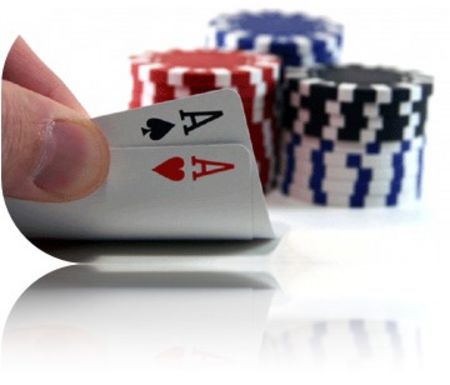Staying the Aggressor with Weak Hands

There are many situations when your hand is not very strong and you have to
decide whether to continue betting as a semi-bluff or to back off your hand. For
example, a common situation is raising preflop with AK only to miss your hand on
the flop and turn. Some of your considerations include:
-
Number of opponents: Generally only consider a semi-bluff against one or
two opponents. A semi-bluff is rarely successful against three or more
opponents on the turn.
- Type of board: The type of board, along with the position and previous
betting of your opponents, should give an indication of the type of hand you
are against. Could your opponents be on a draw, or do they already have a
made hand? Do they have a strong draw or a weak draw? Betting out can
sometimes win the pot against weak draws or when a scare card comes
such as an ace.
- Type of opponent: Avoid bluffing a lot against weak opponents who will call
to the river with many types of hands. On the other hand, you have a better
chance of success if you are against a strong opponent who will respect your
turn bet and fold either weak draws or medium pairs. For example, a strong
opponent might fold middle pair or even top pair with a weak kicker while
weak opponents will almost always call with these hands.
- Your position: Acting early can sometimes communicate a strong hand by
your willingness to bet into one or two opponents; however, this may be risky
depending on the board. If you plan on calling a turn bet in any case, you
must weigh the possibility of winning the pot immediately by betting versus
the risk that an opponent will raise making your draw more expensive.
When acting in late position and your opponents check to you, a bet might
win the pot since your opponents have indicated weakness; however, you
still have the risk that an opponent might check-raise. In marginal situations
where you are not sure if a bluff will be successful, tend to check hands with
outs and bet hands that don't have many outs. You can safely fold to a
check-raise with only a few outs, while checking with several outs allows you
to draw for free rather, than risk paying two bets for your draw. Sometimes
you might bet a marginal holding with the intention of checking the river for a
"free" showdown. This strategy is usually better than checking the turn and
calling the river since you don't give your opponents a free card.
In summary, you can sometimes continue to be the aggressor with weak hands
against one or two opponents: however, this type of aggression should only be
used in the right situations. In many cases, you will need to back off your hand even
against a lone opponent, depending on the type of board, opponent, and betting
sequences. Review the
"Bluffing" for further insights into making successful
bluffs and semi-bluffs.
NEXT...Betting the Turn

